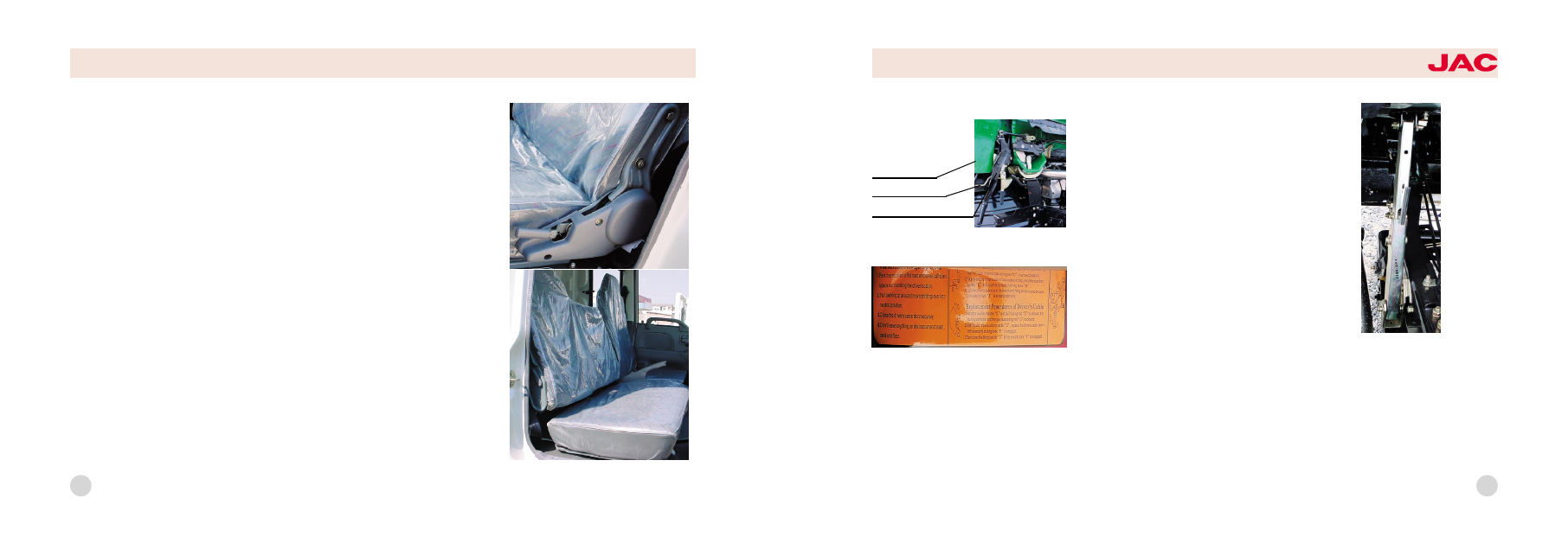JAC Trucks. Service manual - part 101

10
2) Outside door handle
Pull out the outside door handle, and
then the door can be opened. Insert
the starting switch key into the door
lock and turn, the door can be
locked.
3) The door can be locked outside
without the key. First press down the
lock button (figure in the above
page) at the inner side of the door to
the fixed position, then pull the out鄄
side door handle outwards and at
the same time close the door.
4) Pull out the inside door handle,
and the door can be opened. After
closing the door, the door can be
locked if the lock button is pressed
down.
Cab seat
Cab seat can be classified as driver
seat尧 assistant driver seat and rear
row seat. Driver back seat adopts up鄄
right seat. The angle of backrest and
the fore-and-aft position of seat can
be adjusted. The maximum ad鄄
justable angle of the backrest is 56o.
The maximum adjustable distance of
the seat is 160 mm. The seat adjust
system is shown in the right figure.
When vehicle is in the progress of
maintenance, please clean the track
assembly of the driver seat, recoat the
lithium base grease, and tighten all
joint nuts again. If found that the cab
track slide seat has shaking or block
because of distortion, it should be re鄄
paired or replaced with components.
HFC1048
series trucks
11
Cab tilt lock mechanism
Brief of the structure
The cab has turnover functions , also
has turnover and lock up organiza鄄
tion . The turnover was composed of
torsion
bar,
supporting -axle,
cab'srear bracket and so on.The cab
to turnover is used by torsion power.
Lock up system is composed of
right/left lock unit ,turnover lock unit ,
short pull rod ,long pull rod ,rear
bracket of cab and so on .All of this
is to lock the cab too tightly.(as pic鄄
ture)
Please read the tilting notes on the
left door of the cab and on the upper
flange of the wheel seriously before
tilting the cab. The notes are shown
in the upper figure
Use and maintenance
In order to tilting the cab reliably and
running the vehicle safely, please
pay attention to following contents.
渊1冤Cab tilting method and relative
attentive notices.
淤 When the vehicle is stopped on
the horizontal road, you should make
sure that there has enough space
around the cab before tilting. Or else,
the cab may be damaged while tilt鄄
ing.
1.chuck rod
2.overturn rod
3.safe locking hook
notice
schematic diagram of
cab tilt locking device
support rod assembly